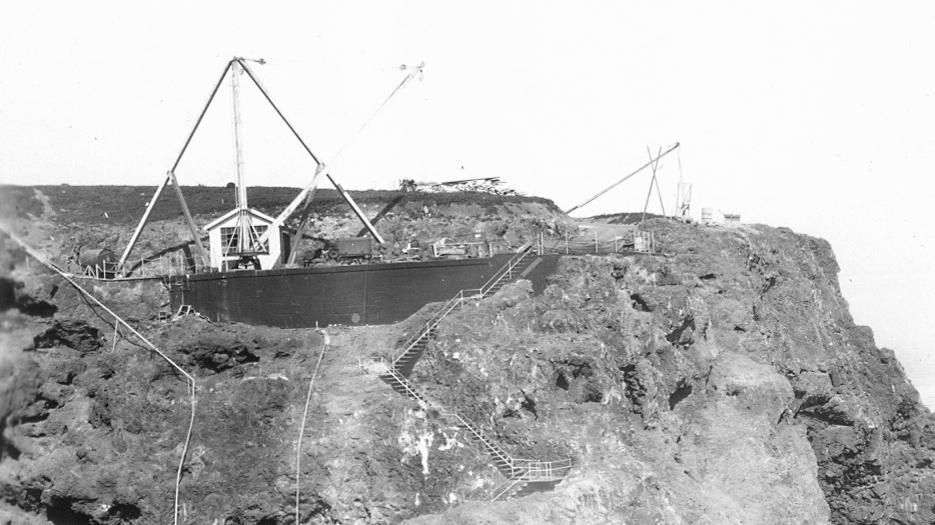Last updated: April 16, 2024
Place
Crane

Historical/Interpretive Information/Exhibits
The much-photographed stairway, landing and derrick hoist at East Anacapa reflect the ingenuity of the Lighthouse Service in providing access to their lighthouse installations. It is reportedly the only remaining Lighthouse Service derrick landing system that is available for the general public to observe on the west coast.
The island's rugged terrain made landing construction quite challenging. In fact, Charles Hillinger, in the The California Islands, wrote that when members of the U. S. Coast Survey team visited Anacapa in 1854 they reported that it was an ideal but impossible site for a light station. Quoting a report, Hillinger wrote, "It is inconceivable for a lighthouse to be constructed on this mass of volcanic rock-perpendicular on every face, with an ascent inaccessible by any natural means . . . ." Nevertheless, construction of the landing facilities (along with the roads, tower, and support buildings) was completed in 1933 at a cost of $110,490.
The Upper Landing contains a small crane building. This building remains in its original use, as a control room, winch house and equipment shed for the large crane which sits next to it. The original crane was replaced in 2020 after the previous crane failed due to prolonged exposure to the harsh marine conditions on the island. The new crane restored essential park operations and improved visitor and emergency services on the island. It is a two-crane design that improved the safety of loading operations. The two-crane system mirrors the configuration of the original historic Anacapa Light Station crane that was installed in 1932. The stairwell was renovated in 1999 and again in 2010.
Of this Charles Hillinger's account of the landing is quite memorable. In 1931 Superintendent H. W. Rhodes requested a 26-foot whaleboat with trunk and cabin to serve as a launch. To meet the problems of landing the craft, he had it equipped with special hoisting gear so that it could be hoisted upon arrival at the island onto the lower landing platform:
"Perpendicular cliffs shot straight up more than 250 feet from the water. Embedded in the rock 50 feet above the surging surf was the lower landing platform, our target and arrival point. Seated in the engine house on the landing platform when the utility boat arrived was the boatswain's mate 1st Class, the officer in charge of the station.
The power was switched on, the heavy boom swung out over our boat and a steel derrick hoist cable and hook lowered. One seaman grabbed the hook and inserted [it] in a midship eye while another secured guiding lines at the bow and stern which were fastened to the landing. Screeching power echoed throughout the cave-locked cove as the powerful hoist was thrust into the lift gears. Up out of the water rose the 7,000-pound boat, her crew and passengers. The boom swung us into a custom-made cradle and our 50-foot flight to Anacapa ended. "
Another interesting account of the landing described the arrival of a new keeper (called officer-in-charge after the Coast Guard took over the Lighthouse Service in 1939) along with his wife. Their launch was stuck swinging in the air as the derrick stopped working mid-operation. The officer and his terrified wife spent their welcome dangling over the swells in the landing cove, not knowing what would happen. Finally the problem was fixed and the couple made it ashore, but the wife reportedly refused to use the derrick again, denying herself shore leave, until she left the island for good.
